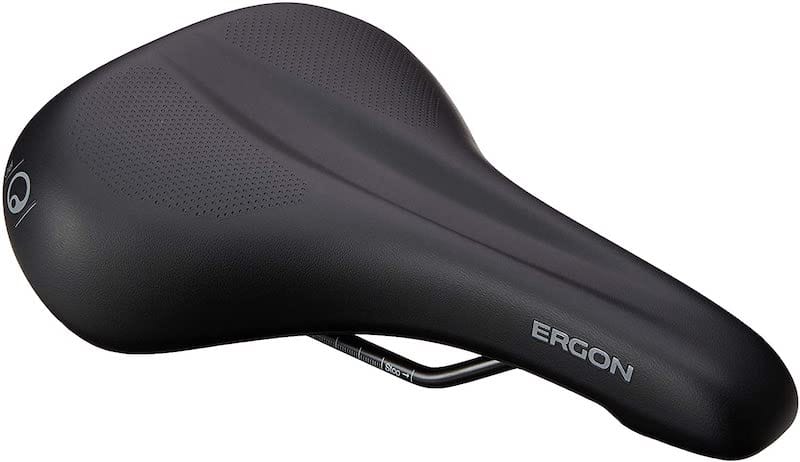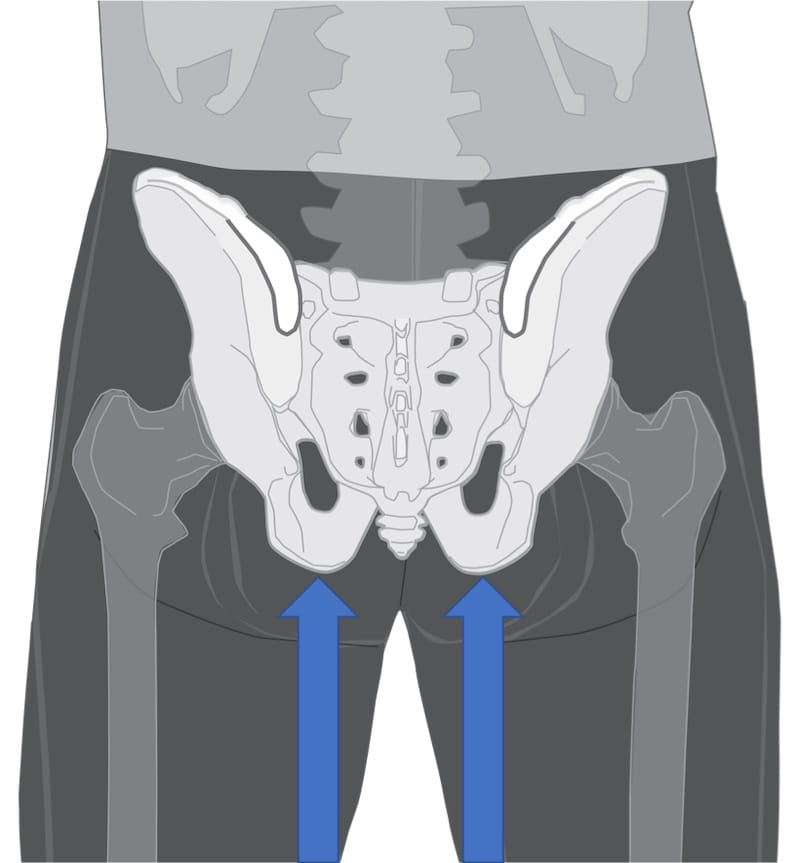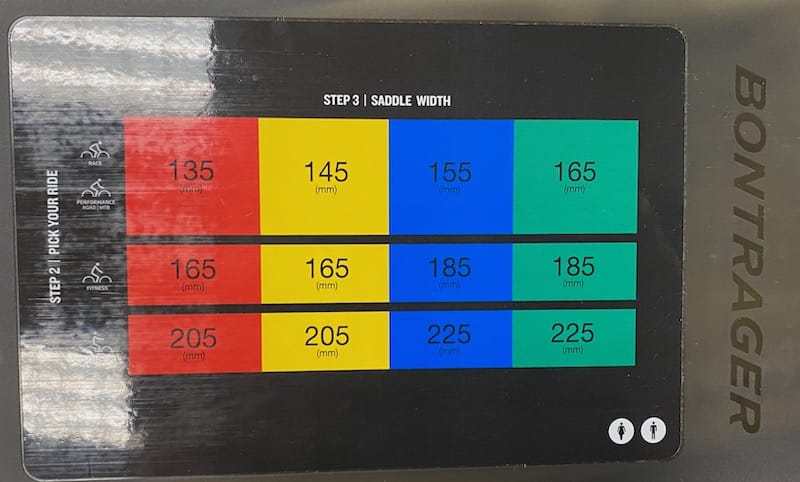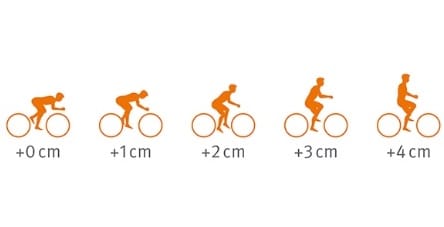Bike Saddles - how do I find one that doesn’t hurt?
Bike Saddles: lots of semi-science, contradiction and too many choices
There’s nothing quite like working to extend your riding time, whether on a motorcycle, bike or e-bike, regardless of terrain, and having physical comfort, or more likely - discomfort, cut your riding short, or require longer and longer breaks, usually with diminishing returns. I’d become so accustomed to this on my motorcycles than when I’d flown across half the country one-way to pick up a new (to me; used) bike and ride it back, besides my emergency toolkit, tank bag, and gear, the one other thing I brought with me was a brand new ‘ergo’ seat. Ergo aftermarket seats on most motorcycles are in many cases like replacing a piece of plywood where almost anything is an improvement (some better than others, of course), but far from a panacea of comfort, and more like provide the ability to maybe double or triple riding distances in the best cases.
Sadly, the situation is even worse, relatively speaking, when it comes to bike/MTB/eMTB/ebike seats...
Where nearly any motorcycle can be ridden without much discomfort for at least 30-60 minutes, it’s just not so on bikes. Granted, if you’re 20-something or have whatever the right mixture of butt muscle, fat, and lack of nerve endings is - you may have fewer issues than some, but for a lot of us, trying to go on longer and longer rides can be a source of real discomfort; a literal pain in the ass.
Things cutely called ‘bike shorts’ or chamois, which make you feel like you’re wearing a diaper - do indeed help, but only reinforce the fact that the issue exists in the first place, to the point that anything that improves the situation is at least worth trying.
I might as well go for the gold and annoy those with e.g. ‘certified bike fitter’ credentials right out of the gate wit hthe above heading.
Nothing against them specifically in reality, and a proper bike fitting can be well worth it for some. I’ve studied human-machine interaction and believe fully in proper ergonomics in anything possible, but unfrotunately in the bike world, there are a fair amount of contradictions, too little scientifically ‘proven’ components, and of course - a whole lot of marketing. Thankfully, there are at least some starting points most of us can use to get a more comfortable, or at least less pain-inducing, ride.
Everyone’s body is different, and so are their riding styles and needs
This is the reality - everyone has similarities to some but also their own unique body composition, along with bike type, riding style, and levels of tolerance. A bike seat, or saddle, may be great for someone on a 30 minute short ride, but turn into a torture device crossing the 45 minute mark.
Some seats will market various types of special foams and/or gels, and those too may feel great sitting on at the bike shop or on first sitting, but may compress over time (even within a single ride for some) to become ineffective.
We’ll try to cover each consideration in turn, starting with the general types of bikes/riding and seat styles for each.

Types of bikes/riding
Recreational/casual riding and cruisers
These types of bikes, and rides, are more casual, with a more upright position, and typically for shorter rides. Some commuter bikes and ebikes have similar riding positions. These types of bikes and their seats aren’t really for riders going all-out full-bore for speed, just some casual riding, and tend to come with the widest seats out there, like some of the Cloud9 offerings or similar. Some of them are comfortable, some not so much. (Note - a link is given to the SizThreeZero bike above the picture, but in this case isn’t an endorsement - this is a cheaply made bike IMO, but a good example of ‘cruiser-type’).
Cargo and/or commuting bikes
This is a bit of a misnomer, as people commute on different styles of bikes, although the most common are similar to cruisers, road bikes, or somewhere in-between, and usually are more upright positioned than for example, drop-bar road bikes. Cargo bikes have a wide range, from simpler ‘cruiser with an added rack’ for food delivery for example, to heavily kitted out bikes with multiple racks, panniers, and the like - but most of these retain similarity in having relatively upright seating position, and similarly wider padded seats.
Mountain Bikes
Even within the realm of mountain bikes, there are different disciplines - downhill focused bikes, enduro, ‘all mountain,' and trail bikes, along with XC or cross-country bikes. Downhill-focused bikes often have double-shouldered fork tubes, and the rider spends very little time on the seat, often using lifts or vehicles to get to the top of a mountain to then ride the downhill. Enduro and all-mountain bikes and riders can do a mixture of climbs, trail, jumps and downhill, where their seat will be in a lowered position via dropper post for much of their ride other than climbing. Trail and cross-country riders tend to spend more time in the seat compared to the other mountain bike disciplines, while downhill-focused bikes and riders may only rarely be in the saddle.
Generally, the more actively someone is moving their body and hips around, or getting up out of the seat, the narrower the seat becomes, as the action of constantly moving your body around, even just in changing from sitting to ‘attack position’/standing on the pedals or shifting weight forward or backward, can chafe the inside of your legs by rubbing against a too-wide seat. MTB seats tend to run ‘in the middle’ width-wise between cruisers and road bikes, although they’re generally closer to the narrow saddles of road bikes.
Road bikes
This is a bit confusing for those new to cycling, as well - aren’t all (or at least most) ‘road bikes’? They are, but this specific category of bikes, is really about those focusing on racking up the miles racing others or the clock, or training for the same.
These bikes typically have long extremely narrow seats, allowing for the most effective transfer of power to the pedals - but certainly not the most comfortable seats for most of us.
Bike touring and bikepacking
Bike touring is the equivalent of what I did a fair amount of on my motorcycles - it’s not about the time to get somewhere, but doing longer rides and miles/kms. Bikepacking is similar but usually with the addition of added gear/racks. In most cases, saddle style is similar - somewhere between a road and MTB saddle, with more padding and a bit wider than a typical road seat, as the rider will be spending more time planted in the saddle.
Do ebikes change anything?
So - they actually do. When you consider the different types of non-assisted riding, and how much standing vs sitting time and body movements are typical of each type of riding, adding assistance in the form of an electric motor lets people stay seated more in the majority of cases. Now, this may not be the case for near-professional analog MTB riders or road racers shifting to an ebike, but it is true for most, as the added power lets the rider climb easier, often without standing on the pedals, for example, with a result of more overall time spent in the saddle. You can see the difference in the pair of Ergon seats - the SM Pro MTB compared to the Sport EMTB seat - the latter is similar width and shape, but does have some additional padding.





That’s so confusing!
Yeah, it sort of is, and that’s before marketing gets involved, let alone the sea of cheap China brands on Amazon and elsewhere who would have you believe their Cloud9 clone is the answer to everything including road racing.
We can simplify things a bit. The bike industry over time made an attempt at working on how to measure the right things for well, better ergonomics. This is the part that is pseudo-science, at least the way many present it, but there is a thing called ‘sit-bone measurement’ and while it’s not a panacea of ‘measure and your problems are solved,’ it can be used as a starting point.
Sit bone measurements
You can look at the image to the right, and note the arrows. The ‘sit bones,’ or Ichael tuberosity, are the bony points shown. Of course, there are nerves and muscles throughout, and reasonable logic would dicate that if your ‘sit bones’ are spread further apart, you’d need a wider saddle.
So, this is generally, true, but it’s really just a starting point. Sitting upright is different than for example, leaned forward for a typical mountain bike seated position, let alone drop bars, and in some positions, you’re not even putting pressure on the sit bones.
Again - but it is a starting point. You may even feel them if thinking about it when you sit down on a hard chair. There are numerous ways to measure them, or more specifically, the distance between them.
You can use a hard chair and put a piece of corrugated cardboard down on it, then ‘assume the position’ - rather than sitting upright, I’d suggest sitting closer to riding position, then find the center of the impressions and measure (sit bone distance is typically measured in mm, but you can convert with an online calculator if need be).
You can also use some aluminum foil on a lightly padded seat or even a stair tread - sit, lean to approximate your seating position on the bike, then lift your legs if possible to ensure the impressions are clear. Stand up and measure from center to center of the impressions.
Finally, some bike shops (or bike fitters) may have a tool specifically for measuring sit-bone distance. These may be colored gel pads or some other mechanism, but they effectively do similar measurements to those above.
I have my site bone measurement, now what?
So this is where a bit of common sense and some not-so-science comes in.
You an consider the types of riding mentioned previously, and how road racing, where the rider wants the most effective power transfer at all costs, has the narrowest seat width standard, while cruisers for occasional riding have the widest, as the rider is most likely to never even come off of the seat.
We can try to treat your measured sit-bone distance as the baseline - assuming you were road racing, which of course - most of us aren’t, but we can adjust ‘outwards’ from there. Indeed, even Bontrager/Trek have an ‘adjustment chart’ (pic shown) that considers racing and performance road to be the baseline, then adds 20-30mm to that for ‘fitness’ riding, and yet even more for recreational. Even their base color code in this case isn’t an exact sit-bone measurement, it’s a range of measurement which equates to one of their standard seat sizes, with their measuring tool yielding a red, yellow, blue or green color code.
But that’s ok, we can use some of the same logic ourselves. Of course, different riding positions may not even impact your sit bones versus nerves and other parts, but again - we have to start somewhere.
WTB and Ergon both have their own variations of online calculators using things like wrist circumference, but I found them to under-report vs actual sit-bone measurement in my case. Measuring my own, I wound up at ~150mm, which made some sense at least, considering one of my bikes had come with a WTB Volt, a generally decent seat, which acted like a medieval torture device for me - but it was a 135mm seat. In this case, at the very least it validated pretty quickly what I already knew - that seat wasn’t even close to the right seat, for me.



So what we really have now - is a starting point
If you’re a road racer or racing the clock, you may be done as you’ve got a match, so just make sure the saddle width is at least equal to your measurement.
For most of us, what we really have - is a starting point. Before even considering the amount of padding, let’s be honest with ourselves here - are you spending a majority of time in the saddle, or a lot of time standing on pedals and/or moving your weight and hips all around like with a MTB with the seat pushed down via dropper post? In the former case, you may only want to add a small amount to seat width if at all, while for the latter, you may consider adding more. You can see from the Bontrager chart, what they’re really doing in their chart is the more seat time = move up further in seat size, which also is making the seat - wider. You can see the same general patter used by SQLab, adding 1cm/10mm all the way to 4cm/40cm the more upright the riding position (or IMO more saddle time or heavier rider). Use this adjusted number as your minimum starting point, but be aware that different manufacturers offer different sizes, and sadly, often enough they aren’t listed directly on Amazon - for example, you may need to go to Ergon’s site to determine their SM E-Mountain Pro size S/M fits 9-12cm or 90-120mm sit bones and their M/L is for 12-16cm or 120-60mm, or WTB’s Koda Medium is 145mm and L is 150mm.
Seat cutouts and padding
How much or how little padding, unfortunately, may come down to trial and error. Just like in mattresses and other domains, there is no shortage of claims to ‘new miracle material,’ or ‘perfect comfort,’ but reality is usually lesser than the marketing hype.
Some seats literally are zero padding, made completely of carbon fiber or leather over a shell, and they may work for some, assuming the general shape is really spot-on for that individual. Added padding usually comes in the form of upholstery foam, gel, memory foam or combiniations of them, again - much like mattresses or motorcycle and car upholstery. Foam, padding and gels can all compress down while riding on a single ride, or eventually wear out, although better quality seats should last for quite some time. One thing to consider is simply that ‘more padding’ like some of the over-stuffed cruiser seats on Amazon and elsewhere - does NOT nescessarily mean more comfortable.
Some seats, mostly non-cruiser types, may either have a cutout in the seat like on the Ergon SM Pro, a channel in the center of the seat, or nothing at all. The depressed channel with or without a cutout, is intended for additional pressure relief, in partoicular for me, the perenium area, which may be advantageous in some riding positions, while the venting is an attempt at additional cooling. Whether or not the various cutouts and shapes have significant impact is somewhat debated, but proper seat width and general shape can only help in comfort.

Saddle Position
Even with the proper width and shape, you can still be less-than-comfortable on your bike. There are more to bike ergonomics than the saddle, but at the least, you’ll want to ensure the proper saddle position. Most new to cycling will nearly always have their seat far too low.
Start with the seat adjusted to be roughly level or parallel to the ground(you can later fine-tune if need be, but typically you should keep the saddle level +/- only a few degrees). Proper seat height is roughly at hip level when standing next to your bike, but may be even higher, so depending on your frame standover height/frame size, along with your inseam, you may or may not be able to stand, let alone flat-foot, when seated at a stop on the bike. This is ok - what you’re really looking for here is when pedaling seated, at full leg/pedal extension (i.e. one of the pedals closest to the ground, full extension), your leg is just shy of full leg extension, that is with a very slight bend at the knee. This is assuming proper foot placement as well, using the front half of your foot on the pedal. You can also adjust the height of your saddle so with your heel on the pedal and fully seated, your leg is straight - this will have a similar effect, with your leg being very slighly bent when the front part of your foot is on the pedal. If you are ‘bobbing’ when pedaling down the road - it’s not right.
Fore/aft seat adjustment is so that your reach to the bars is comfortable, and when seated and pedaling, your butt is properly placed on the rearward portion of the seat. Ideally, this will also center your body weight over the center of the cranks, bottom bracket or motor, but this may not be perfect depending on frame size selected, handlebars and stem.
Loaner seats - kind of
Even with the above information, it can still be tough finding the ‘right’ saddle. Some local shops and chains (REI, Trek, ..) along with bike fitters may have ‘seat loaner’ programs, free or with some minimal fee, which lets you ‘borrow’ one seat at a time. Even if there’s a nominal fee, it may be worth looking into. The downsides are you can only try the seats they carry, which may or may not include a specific brand or model you were interested in, and of course, some may try an upsell into what may be a rather expensive bike fitting which you may or may not be interested in.
It’s worth considering, especially if you’re still unable to start narrowing down seat options.
Of course - beg friends to sit on their bikes, or even borrow their seats for a ride if possible..
This may or may not be possible, but if you have any friends who also ride, ideally a similar bike or style, and are at least close in overall body shape/weight, it’s worth asking. You can also pull a seat from the shelf, and just sit on it if need be, to see if you can feel your seat bone position - at the very least to determine ‘not wide enough’ as even ruling particular models (or sizes initially) out can be helpful in narrowing down your choices.
Specific brands
Honestly, there are far too many out there, and this also depends on budget. For cruisers always seated, it may be worth looking at a Cloud9 seat or one of the various clones - they’re generally cheap, and some people really like them.
For some well-known quality brands including options more MTB/eMTB focused, there’s Ergon, SQlab, Fizik, Bontrager/Trek and probably a handful more.
Closing thoughts
Unfortunately there remains an element of ‘see what works’ in seat selection, and there’s no replacement for seat time, but at least you can narrow down the options! I recently picked up an Ergon SMC Core saddle, primarily due to availability, but am still also considering the Ergon SM E-Mountain Core, SM E-Mountain Pro and SM E-Mountain Sport, along with the SQlab ErgoWave or MD Active, and Fizik Terra Aidon models.